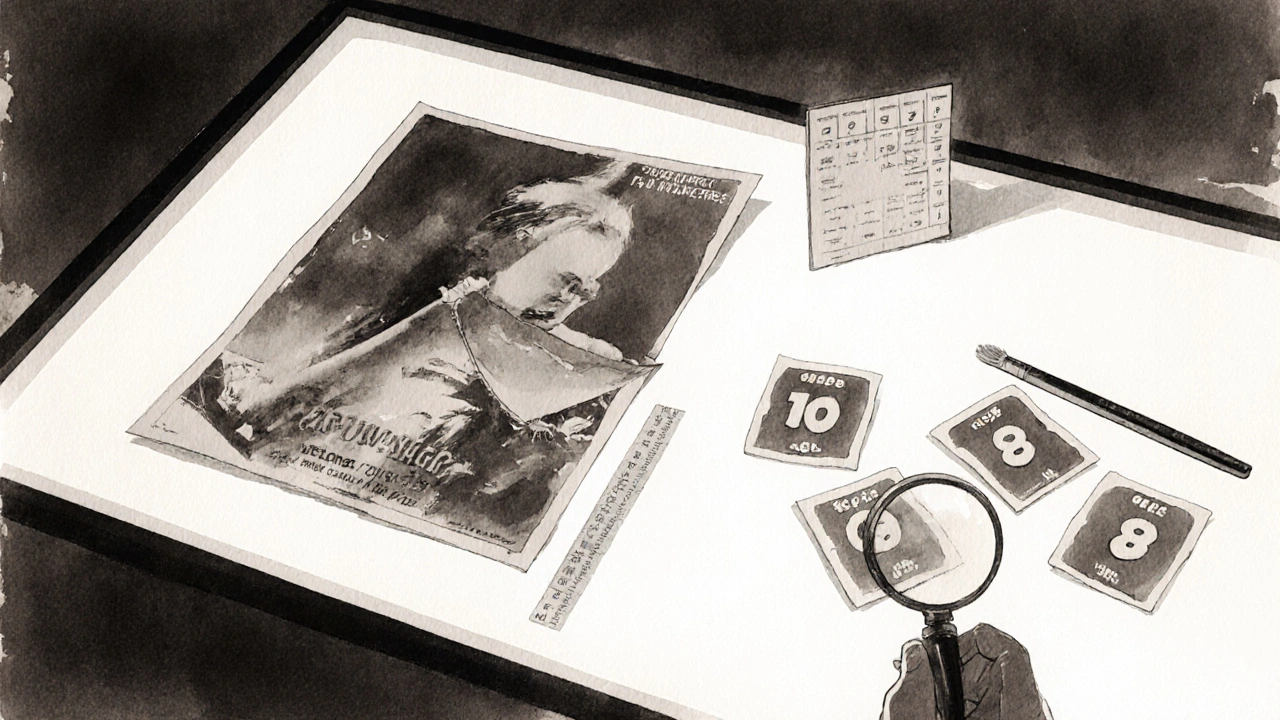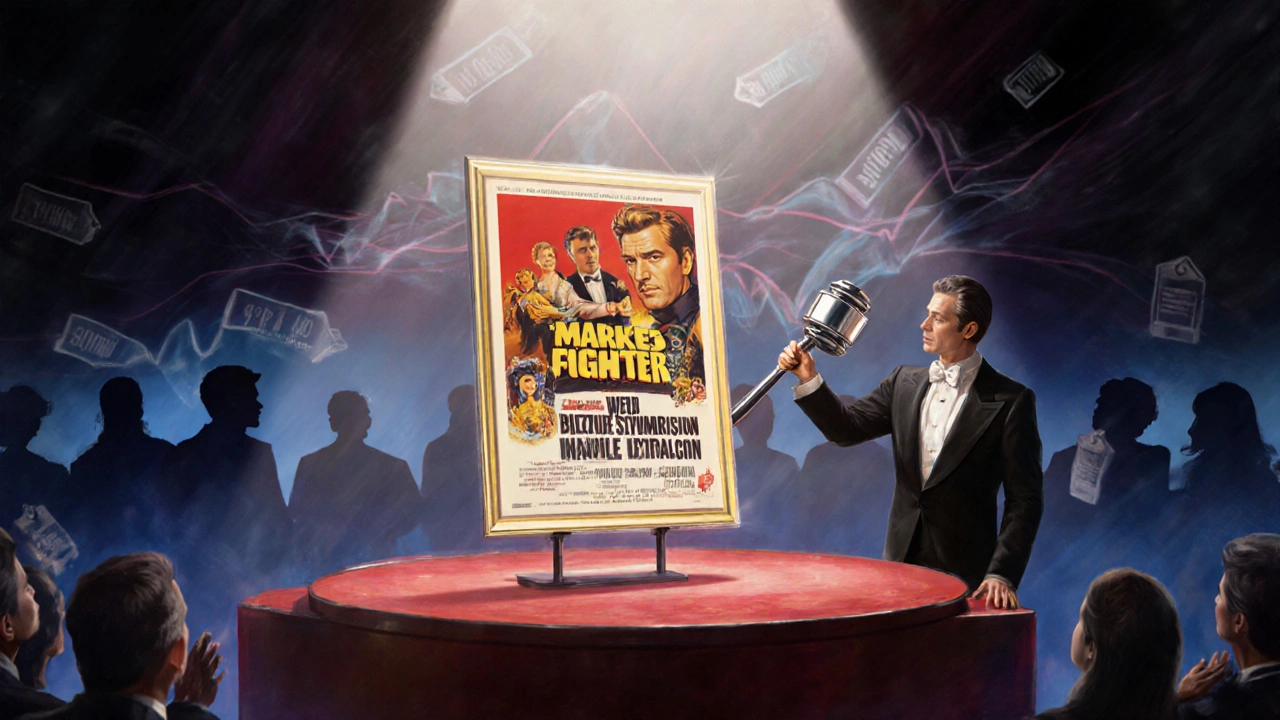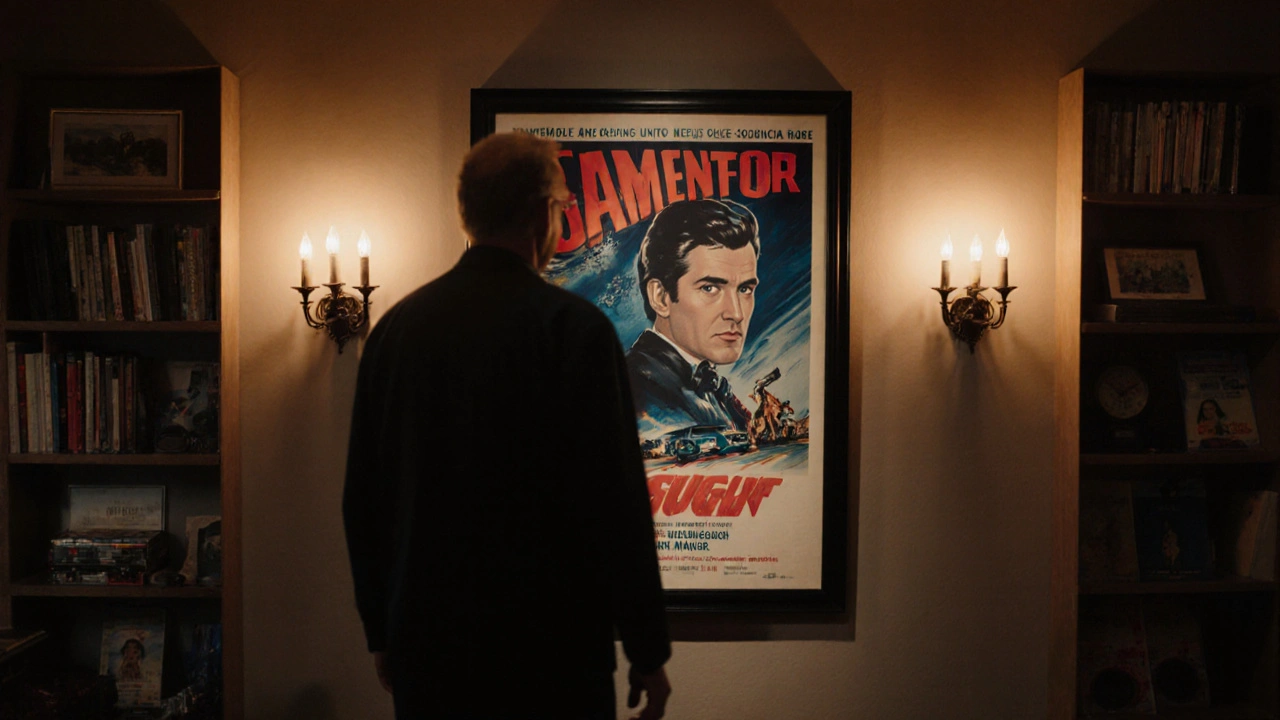Movie Poster Value Calculator
Step 1: Enter Base Price
The average sale price of comparable posters (e.g., $125 from Heritage Auctions)
Step 2: Select Condition Grade
Step 3: Enter Edition Size
The total number of posters in the limited run (e.g., 1/500 = 500)
Step 4: Provenance & Rarity
Estimated Value
Multiplier breakdown:
- Condition: 1.0
- Rarity: 1.0
- Provenance: 1.0
- Market Trend: 1.0
Ever wondered why one movie poster sells for a few bucks while another fetches thousands? Valuing a film poster isn’t just about glancing at the image - it’s a mix of history, rarity, condition, and market buzz. This guide walks you through the exact steps to put a price on that limited edition movie poster you’ve got hanging on your wall.
What Makes a Poster Worth More?
Before you dive into numbers, understand the main drivers behind a poster’s price tag. Each factor adds a layer to the final valuation:
- Limited edition status - The smaller the print run, the higher the scarcity premium.
- Condition - A pristine, uncreased poster commands a big bump.
- Artist or designer reputation - Works by iconic artists like Drew Struzan add cachet.
- Provenance - Documentation or a famous previous owner boosts confidence.
- Cultural relevance - Posters from cult classics or blockbuster franchises tend to appreciate faster.
- Market trends - Current demand for a franchise influences price spikes.
Step 1: Check the Print Run and Edition Details
The first thing any collector does is verify how many copies were produced. Limited runs can range from a handful for ultra‑exclusive pieces to a few thousand for standard promotional prints.
Key data points to capture:
- Original release year - older prints often have a built‑in vintage premium.
- Edition size - look for numbers like “1/500” or “Limited Edition of 2,000”.
- Variant information - alternate color schemes, special foil stamps, or signed versions create micro‑rarities.
If the poster doesn’t list a run size, try the publisher’s archive or fan‑site databases. Missing data is a red flag that the item may be a later reproduction.
Step 2: Grade the Condition
Condition is the single biggest multiplier in the valuation equation. Most collectors use a standardized grading scale similar to comic books:
| Grade | Definition | Typical Price Impact |
|---|---|---|
| Mint (10) | Flaw‑free, no creases, bright colors, original edges intact | +80‑100% over average |
| Near Mint (9) | Very slight imperfections, no major wear | +50‑70% |
| Very Good (7‑8) | Minor creases or edge wear, colors still vivid | +20‑40% |
| Good (5‑6) | Noticeable wear, some fading, possible small tears | +0‑20% |
| Poor (1‑4) | Heavy damage, large tears, severe fading | −30‑70% |
Document any flaws with high‑resolution photos. Buyers will often ask for close‑ups of corners, edges, and the center of the image.

Step 3: Verify Authenticity and Provenance
Even a pristine poster can be worth nothing without proof that it’s an original. Authentication services such as PSA/DNA or Beckett Authentication Services issue certificates that detail the poster’s origin, edition number, and condition grade.
Ask the seller for any of the following:
- Original purchase receipt or invoice
- Certificate of authenticity (CoA) from the studio or a recognized third‑party
- Provenance notes - e.g., “owned by the film’s costume designer”
If you can’t locate paperwork, look for tell‑tale signs: studio seal, original back‑stamp, or high‑quality printing techniques that counterfeiters rarely replicate.
Step 4: Research Recent Sales Data
Historical transaction prices give you a realistic market baseline. Here’s where seasoned collectors pull data:
- Heritage Auctions - Regularly publishes final bid amounts for iconic posters.
- eBay Sold Listings - Filter by “Sold Items” and “Completed” to see actual sale prices.
- Posteritati - A niche marketplace that tracks auction results for rare film art.
Take note of the following variables when you log a sale:
- Sale price (hammer price plus buyer’s premium)
- Condition grade reported
- Edition size and specific variant
- Date of sale - recent transactions reflect current demand.
Average the last 5‑10 comparable sales to smooth out outliers.
Step 5: Build a Rough Valuation Formula
While no calculator can replace expert judgment, a simple model helps you start the conversation:
Base Price = Average Comparable Sale Price Adjusted for Condition = Base Price × (Condition Multiplier) Adjusted for Rarity = Adjusted for Condition × (Rarity Multiplier) Adjusted for Provenance = Adjusted for Rarity × (Provenance Multiplier) Final Estimate = Adjusted for Provenance × (Market Trend Factor)
Typical multipliers:
- Condition Multiplier: Mint = 1.8, Near‑Mint = 1.5, Very Good = 1.2, Good = 1.0, Poor = 0.7
- Rarity Multiplier: <10 copies = 3.0, 10‑100 = 2.0, 101‑500 = 1.5, >500 = 1.0
- Provenance Multiplier: Documented celebrity ownership = 1.5, Studio CoA = 1.3, None = 1.0
- Market Trend Factor: Hot franchise (+20%), Stable (0%), Declining (‑10%)
Plug the numbers in, and you’ll get a ballpark figure. Adjust up or down based on personal intuition and any unique story behind the piece.

Checklist for Sellers and Buyers
Keep this cheat‑sheet handy during negotiations:
- Confirm edition size and variant number.
- Grade the condition using the five‑point scale.
- Secure an authentication certificate if the poster is rare.
- Gather at least three recent comparable sales.
- Calculate a range using the formula above - don’t rely on a single number.
- Consider additional costs: framing, shipping, insurance.
Common Pitfalls and Pro Tips
Don’t rely on the seller’s word alone. Verify every claim with documentation.
Watch out for “reproduction” stamps hidden on the back. Authentic prints often have a studio’s official laser‑etched seal.
Pro tip: Frame a poster only after you’ve locked in a sale price. Framing can add 15‑30% value, but it also changes the condition grade if not done carefully.
Another tip: Track upcoming film anniversaries. A 30‑year celebration can trigger a sudden demand surge for related artwork.
Mini‑FAQ
How can I tell if a poster is truly limited edition?
Look for a printed edition number (e.g., “#23/500”) and a statement from the studio or publisher confirming the run size. If the back lacks any numbering or official seal, it’s likely a standard promotional print.
Do I need a professional grading service?
Professional grading isn’t mandatory, but it adds credibility, especially for high‑value items. A PSA/DNA or Beckett grade can increase buyer confidence and often boosts the final price by 10‑30%.
What’s the best platform to sell a rare poster?
Specialty sites like Posteritati or high‑profile auction houses (Heritage, Rago) reach serious collectors. For lower‑value pieces, established marketplaces such as eBay can work if you provide thorough documentation.
How much does framing affect price?
A well‑matched frame can add 15‑30% to the resale value, especially for mint‑condition posters. However, an ill‑fitting frame may damage the edges, so many sellers prefer to sell unframed and let the buyer handle framing.
Is there a quick way to estimate a poster’s worth?
Start with the average sale price of three comparable listings, apply the condition multiplier (Mint = 1.8, Good = 1.0, etc.), then adjust for rarity and provenance. The result gives you a reasonable price range to start negotiations.
Whether you’re looking to buy that iconic “Jaws” poster for your home theatre or you’re trying to cash in on a limited‑edition “Star Wars” art piece, following these steps will help you arrive at a fair, data‑backed valuation. Happy hunting!



Comments
If you're just starting out, this step‑by‑step rundown will save you time.
If you love spreadsheets, this is your dream – a treasure map of multipliers that will make you feel like a Wall Street analyst on a caffeine binge.
Look, skipping the provenance check is a gamble you can't afford; stop assuming a glossy back means authenticity and start demanding real documentation before you waste money.
When we contemplate the value of a limited‑edition poster, we are, in essence, wrestling with the age‑old tension between scarcity and desire, a dance that has fascinated collectors since the earliest days of printed media.
Scarcity, quantified by the edition size, serves as the raw material upon which the market builds its narrative, a narrative that is, inevitably, shaped by the cultural weight of the film itself.
Consider a poster from a cult classic that, decades later, has accrued a mythos far beyond its original box‑office performance, and you begin to see how nostalgia compounds the numeric rarity.
Yet rarity alone does not guarantee price; condition, that fragile veneer of preservation, acts as a multiplier that can either amplify or diminish the base value.
A mint‑grade piece, free of creases, with colors that still pop, is, in the eyes of a serious collector, a near‑perfect convergence of physical integrity and historical significance.
Conversely, a poster that bears the scars of time, faded corners, and a torn rim, tells a story of neglect, and the market answers with a discount that reflects both risk and reduced aesthetic pleasure.
Provenance, the documented journey from studio to owner, injects an additional layer of trust, a kind of provenance premium that can tilt the valuation curve upward by twenty to fifty percent.
Authentication services, such as PSA or Beckett, provide a third‑party seal, a modern form of guild endorsement, that reassures buyers and, as a result, often commands higher bids.
Market trends, meanwhile, are the volatile winds that can either lift a poster’s price to stratospheric heights or drag it down into obscurity, depending on the current hype surrounding the franchise.
Anniversaries, new releases, or even a viral meme can act as catalysts, injecting fresh interest into otherwise dormant assets.
The formula presented in the guide, while helpful, should be treated as a compass rather than a GPS, directing you toward a reasoned estimate without dictating an absolute figure.
In practice, you will often find that comparable sales, especially those filtered for condition and edition, form the backbone of any credible appraisal.
It is wise to gather at least five recent transactions, average them, and then apply the appropriate multipliers, remembering that each multiplier is, at its core, an expression of perceived risk and reward.
Do not underestimate the psychological component: collectors are, after all, humans, and emotions such as nostalgia, personal attachment, and the thrill of ownership play invisible yet powerful roles.
Therefore, when you sit down to price your poster, ask yourself not only what the numbers say, but also what story the poster tells, and how that story resonates within the current collector community.
In the end, value is a dialogue between the tangible attributes of the piece and the intangible desires of the market, a dialogue that only you, as the informed participant, can navigate with confidence.
Honestly most people overthink this whole thing, just check the edition number and a decent grade and you're fine.
Everyone's acting like rarity is everything, but I think a well‑framed mid‑grade print can out‑sell a dusty mint one any day.
Oh great, another guide telling us to count all the variables-because we all have endless hours to become expert accountants of poster hype, right?
Keep digging into the details, and you'll soon see how each piece of info adds confidence to your price-good luck with the hunt!